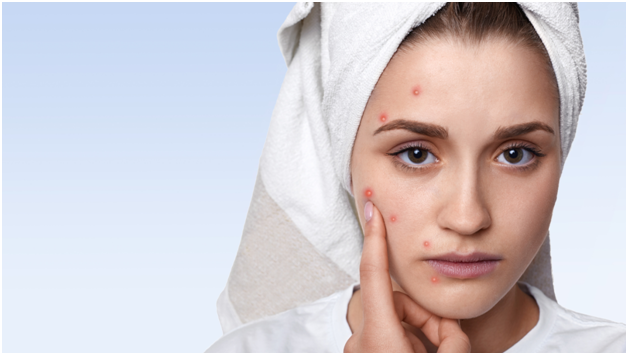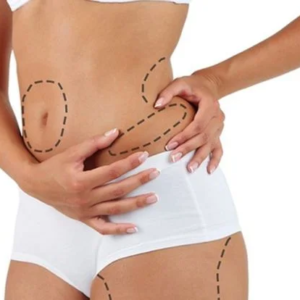Surprising Causes of Adult Acne (And How to Treat Them)

When most people think of acne, they picture teenagers battling breakouts during puberty. But adult acne is more common than many realize—and often more frustrating. It tends to pop up during your 20s, 30s, 40s, and even beyond, sometimes without warning and despite a solid skincare routine.
While hormones are frequently blamed, there are several lesser-known reasons why adults struggle with persistent pimples, blackheads, and cystic acne. The good news? Once you identify the root cause, you can take the right steps toward clearer skin. Below are some surprising causes of adult acne and the best ways to treat them.
1. Hair and Skin Products That Clog Pores
Even the most luxurious beauty products can be sneaky culprits behind your breakouts. Ingredients like coconut oil, lanolin, and certain silicones found in moisturizers, conditioners, and makeup can clog pores and trigger acne—especially around the hairline, jawline, or cheeks.
This is known as “acne cosmetica,” and it’s more common than you might think, especially in people with sensitive or oily skin.
How to treat it: Look for products labeled non-comedogenic, which means they’re formulated to avoid clogging pores. Avoid heavy creams and opt for lightweight, oil-free options where possible. Always remove makeup thoroughly before bed and cleanse after using hair products.
2. Stress and Cortisol Overload
Stress doesn’t just affect your mental health—it impacts your skin, too. When you’re under chronic stress, your body produces more cortisol, a hormone that can increase oil production and inflammation, both of which contribute to acne flare-ups.
For many adults, stress-related acne appears on the jawline, chin, or around the mouth and often coincides with other symptoms of burnout or fatigue.
How to treat it: In addition to refining your skincare routine, incorporate stress-reducing practices like daily exercise, meditation, or better sleep hygiene. For stubborn cases, consult the best medical dermatologist to determine whether hormone-regulating medications or topical treatments may be necessary.
3. Overwashing or Over-Exfoliating
It’s tempting to fight acne by cleansing your skin aggressively or using harsh scrubs daily—but this can actually backfire. Stripping the skin’s natural barrier can cause irritation, increase oil production, and lead to more breakouts.
This mistake is especially common in adults who are trying to “dry out” their acne with alcohol-based toners or physical exfoliants.
How to treat it: Use a gentle, pH-balanced cleanser twice a day and exfoliate no more than 1–2 times per week with a mild chemical exfoliant like salicylic acid. Follow up with a non-comedogenic moisturizer to maintain hydration and skin balance.
4. Hidden Hormonal Imbalances
Hormonal fluctuations don’t end after adolescence. For women especially, adult acne can flare due to menstrual cycles, pregnancy, perimenopause, or conditions like polycystic ovarian syndrome (PCOS). This type of acne often appears on the lower face and neck in the form of painful cysts.
Men can also experience hormone-related acne, though it’s typically less cyclical.
How to treat it: Hormonal acne may require prescription options like oral contraceptives, spironolactone, or retinoids. A medical professional can help assess your hormone levels and recommend a treatment plan that goes beyond surface-level skincare.
5. Diet and Gut Health
While diet isn’t the sole cause of acne, there is growing evidence that certain foods—especially those high in sugar, dairy, or refined carbohydrates—can contribute to inflammation and worsen acne in some people.
In addition, poor gut health may lead to imbalances in your skin’s microbiome, increasing the likelihood of breakouts.
How to treat it: Consider tracking your food intake and acne patterns to identify potential triggers. Adding more anti-inflammatory foods (like leafy greens, omega-3-rich fish, and fermented foods) may help support clearer skin. A dermatologist may also recommend probiotics or supplements based on your needs.
6. Phone and Pillowcase Bacteria
You might be surprised at how much bacteria builds up on surfaces your face touches every day—especially your phone screen and pillowcase. These can transfer oil, dirt, and bacteria onto your skin, leading to clogged pores and pimples.
Frequent touching of the face (especially with unwashed hands) is another often-overlooked cause of acne in adults.
How to treat it: Wipe down your phone daily with alcohol-free cleaning wipes, wash your pillowcase at least once a week, and avoid touching your face throughout the day. Small changes in hygiene can lead to big improvements in skin clarity.
7. Incorrect Product Pairings
Using the wrong combination of skincare products—or layering too many actives at once—can confuse your skin and trigger acne. For example, pairing retinol with vitamin C or using too many exfoliants at the same time can lead to irritation and inflammation.
How to treat it: Simplify your routine and stick to tried-and-true acne-fighting ingredients like benzoyl peroxide, salicylic acid, or retinoids—used correctly and not all at once. When in doubt, consult a professional who can create a personalized treatment plan.
Adult acne is complex, and its causes often go beyond teenage oil production. From stress and hormones to hidden irritants and lifestyle factors, there are many reasons your skin might be acting up. But with a bit of investigation—and guidance from the best medical dermatologist for acne—you can find a solution that works for your unique skin.
The first step is recognizing that adult acne isn’t your fault, and you’re not alone. The next step? Treating it from the inside out, with smarter habits and professional support.




